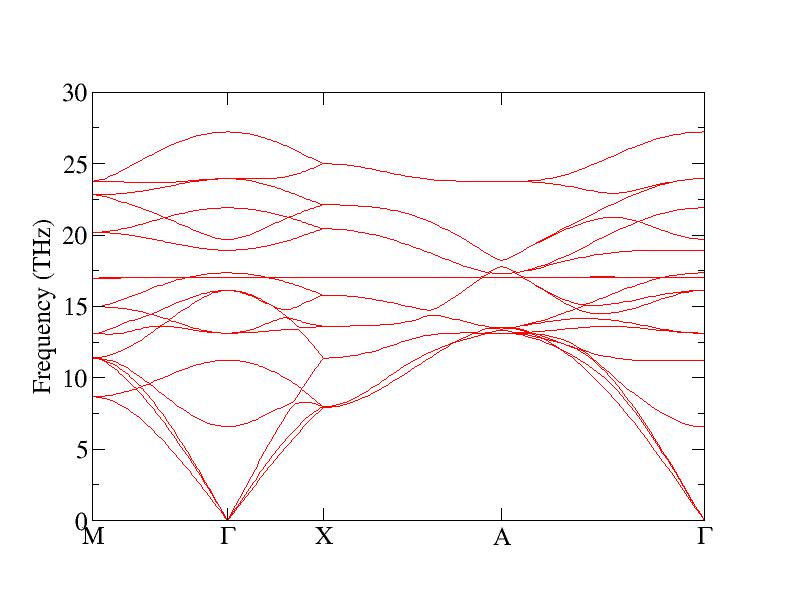
To calculate the dispersions we need to add the following settings in
the INPHON file:

LRECIP = .T.
ND = 4; NPOINTS = 50
QI = 0.5 0.5 0.0
0.0 0.0 0.0
0.5 0.0 0.0
0.5 0.5 0.5
QF = 0.0 0.0 0.0
0.5 0.0 0.0
0.5 0.5 0.5
0.0 0.0 0.0
MASS = 28.085 16.0.
LRECIP = .T. means that the coordinates of the initial (QI) and final
(QF) q-points are in units of reciprocal space lattice vectors.
Set LRECIP=.F. if you want to give these numbers in Cartesian
coordinates. ND is the number of initial and final points (usually
high symmetry points in the Brillouin zone (BZ)), and NPOINTS is the
number of points between them. MASS is the mass of the ions. We also
need to add:
LSUPER= .F.
which will tell PHON to go beyond the generation of the
super-cell (and not generating one). These settings will make PHON generate the file FREQ containing the frequencies in THz, and
the file FREQ.cm with the frequencies in cm![]() . If the number of
atoms in the primitive cell is larger than 16 then FREQ and FREQ.cm
are not written, and PHON produces a number of files FREQ1
.... FREQn, ... containing 48 phonon modes each (in THz units).
By setting the variable:
. If the number of
atoms in the primitive cell is larger than 16 then FREQ and FREQ.cm
are not written, and PHON produces a number of files FREQ1
.... FREQn, ... containing 48 phonon modes each (in THz units).
By setting the variable:
LFORCEOUT=.TRUE. (default = .FALSE.)
The program writes the file HARMONIC which contains the force constant matrix.